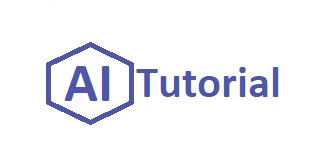📚 What Does “Training an LLM” Mean?
Training an LLM means teaching a model to understand language by exposing it to huge amounts of text data, so that it can predict, generate, or summarize text on its own.
It’s like feeding a machine millions of books, websites, conversations, and teaching it the patterns of language — without explicitly programming it with rules.
🔍 Simple view:
Training = learning the relationship between words, sentences, and ideas.
⚙️ Stages of Training an LLM
Stage
Purpose
1. Pretraining
Teach the model language basics from a massive, general dataset.
2. Fine-tuning
Adjust the model for specific tasks or behaviors.
3. Alignment Training
Make the model safer and more useful (e.g., using RLHF – Reinforcement Learning from Human Feedback).
🛠️ How Pretraining Works
- Data Collection: Gather huge datasets (web text, books, Wikipedia, articles, code, forums).
- Tokenization: Break text into smaller pieces called tokens (words, parts of words, symbols).
- Objective: Train the model to predict the next token.
- Loss Function: Measure how wrong the model’s prediction is (commonly Cross-Entropy Loss).
- Backpropagation: Update the model’s weights to make better predictions next time.
- Massive Scale: Trained on hundreds of GPUs/TPUs for weeks or months.
📈 How Fine-tuning Works
After pretraining, fine-tuning is done on a smaller, task-specific dataset.
Examples:
- Fine-tune a general model to become a medical chatbot.
- Fine-tune on customer service data to improve business support bots.
🔥 Alignment Training (RLHF)
Reinforcement Learning from Human Feedback (RLHF) is used to:
- Align the model’s behavior with human values.
- Reduce harmful, biased, or nonsensical outputs.
- Involve human labelers ranking model responses → AI learns from these rankings.
🎯 Quick Overview Diagram
Massive Dataset
➡️
Tokenization
➡️
Pretraining
➡️
Fine-tuning
➡️
RLHF
➡️
Final LLM
🧠 Common Training Techniques and Tools
Technique
Purpose
Mixed Precision Training
Faster training with lower memory
Data Augmentation
Create variations of training data
Curriculum Learning
Train with easy examples first, then harder ones
Distributed Training
Train across many GPUs or TPUs simultaneously
Checkpointing
Save model states during training to avoid loss on crash
🧩 Challenges in Training LLMs
- Data Quality: Garbage in, garbage out.
- Compute Costs: Training can cost millions of dollars.
- Bias & Fairness: Models can reflect and amplify biases in training data.
- Alignment Problems: Ensuring AI behaves safely and responsibly.
Training an LLM is like building a brain for language — starting by teaching it words, then ideas, and finally ethics and behaviors.
It’s a combination of huge data, massive computing power, and careful alignment with human needs.
